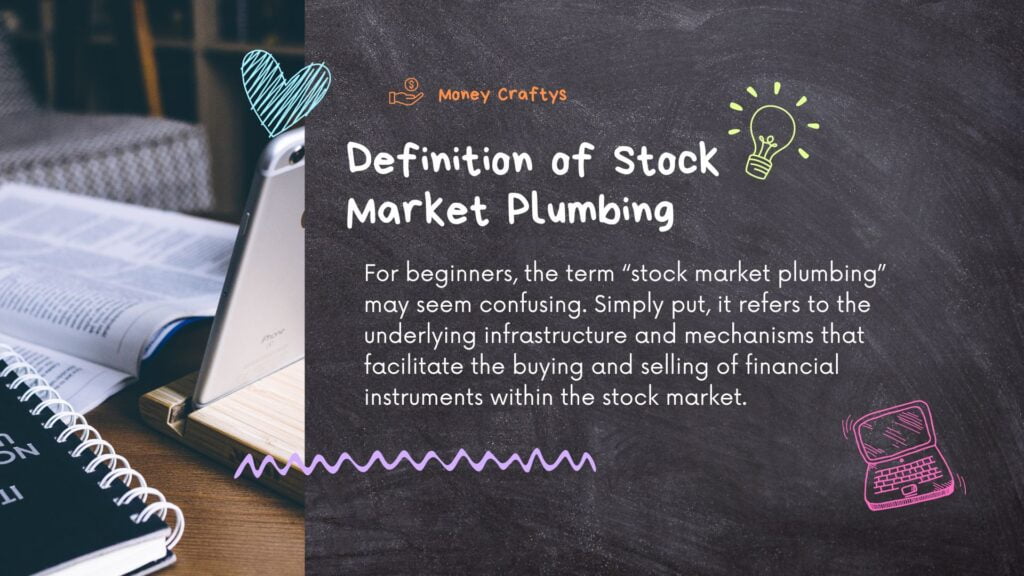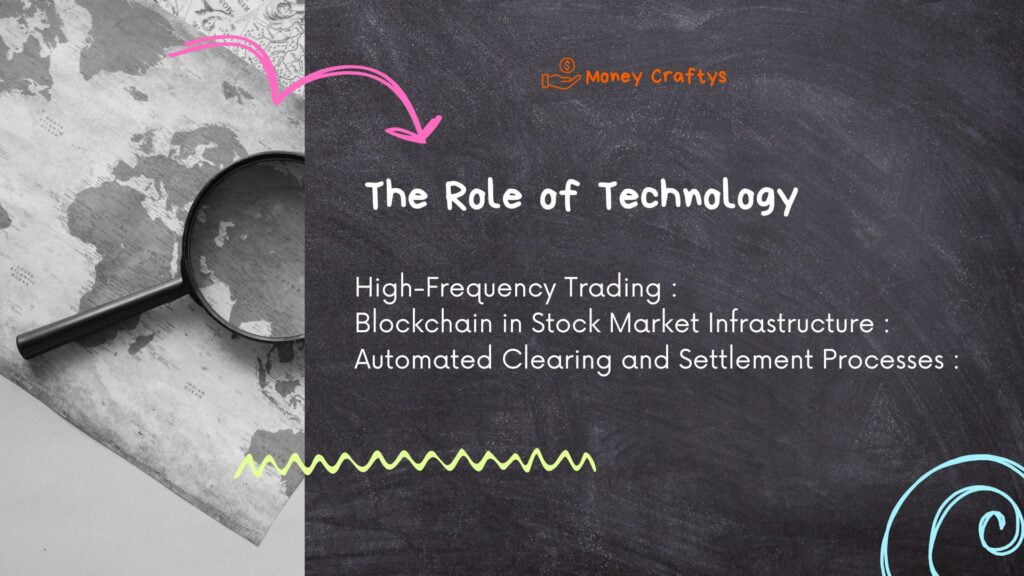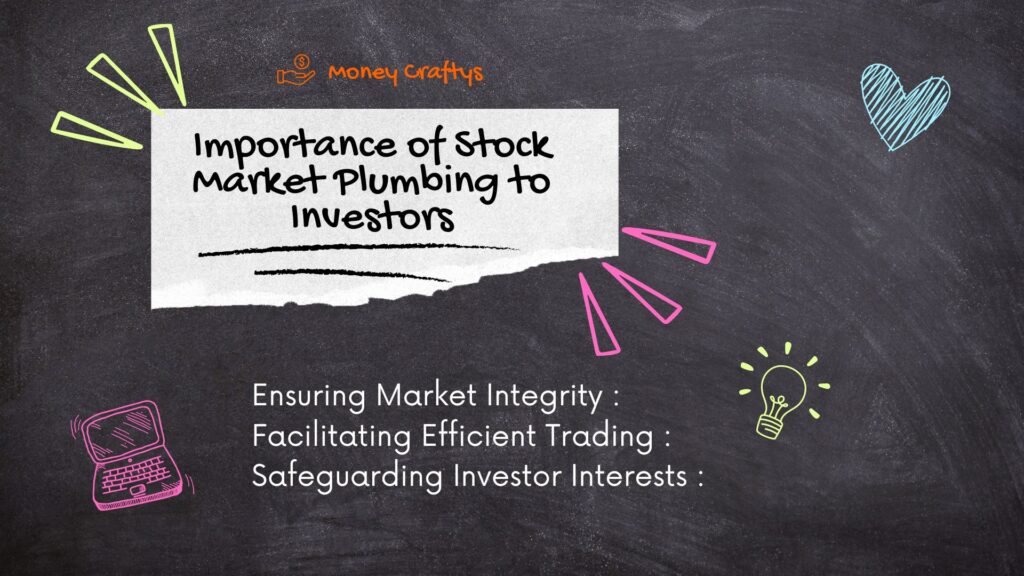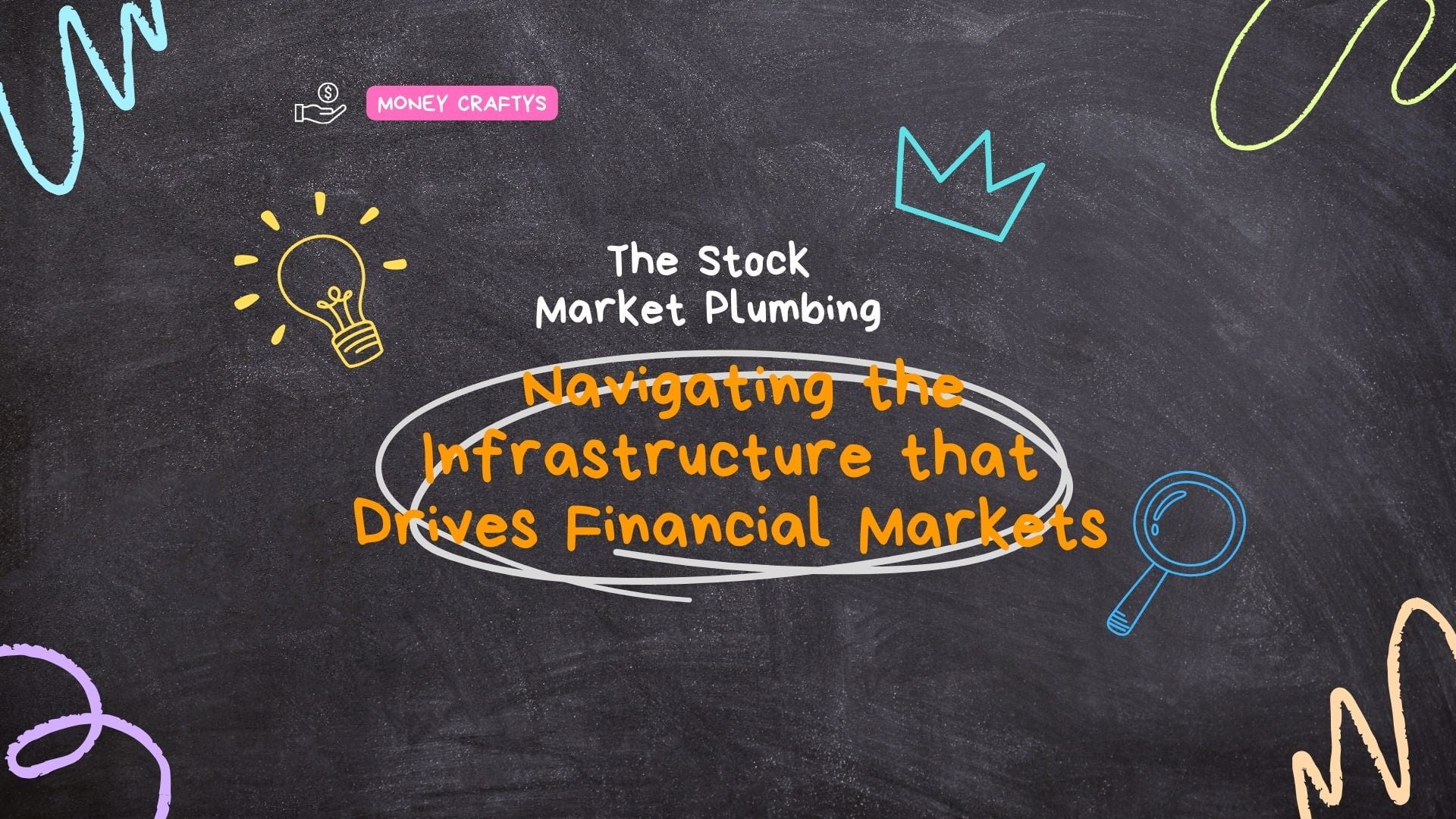The financial world the stock market plumbing, with its myriad complexities, is often compared to a vast and complex plumbing system. At the center of this system is the stock market, a dynamic entity that has its own set of plumbing – the essential infrastructure that keeps the gears of the financial markets turning smoothly. In this article, we explore the fascinating scope of “stock market plumbing”, its components, technical underpinnings, regulatory landscape and its vital role in the investment ecosystem.
Definition of Stock Market Plumbing

For beginners, the term “stock market plumbing” may seem confusing. Simply put, it refers to the underlying infrastructure and mechanisms that facilitate the buying and selling of financial instruments within the stock market. This complex network of systems ensures the uninterrupted operation of the financial markets from the initiation of the trade till its final settlement.
Importance of Understanding Stock Marketing Infrastructure
For investors and market participants, gaining insight into stock market plumbing is more than intellectual curiosity. This is a strategic imperative. Understanding how the market pipeline works provides a comprehensive view of the risks, opportunities and potential challenges inherent in the financial landscape.
Components of Stock Market Plumbing

- Exchanges and Trading Platforms : At the forefront of the stock market infrastructure are exchanges and trading platforms. These are areas where buyers and sellers gather to execute trades. Understanding the nuances of different exchanges is important for investors who want optimal execution of their trades.
- Clearing and Settlement Systems : Once a trade is executed, clearing and settlement systems come into play. These systems ensure smooth transfer of securities and funds between the buyer and the seller, reducing counterparty risk and ensuring the integrity of the transaction.
- Depositories and Custodians : Depositories and custodians safeguard investors’ assets. They play a vital role in the post-trade process by holding the securities in electronic form and providing a secure environment for their storage.
- Market Makers and Liquidity Providers : Market makers and liquidity providers contribute to market efficiency by facilitating trading activities. Understanding their role is essential to understand market dynamics and liquidity conditions.
The Role of Technology

- High-Frequency Trading : Technology has revolutionized stock market plumbing, and high-frequency trading (HFT) is a prime example. HFT relies on advanced algorithms and high-speed data feeds to execute trades in a fraction of a second, emphasizing the importance of technical skills in today’s financial landscape.
- Blockchain in Stock Market Infrastructure : Blockchain technology is slowly making its way into stock market plumbing. Its decentralized and transparent nature has the potential to streamline processes, enhance security, and reduce inefficiencies in clearing and settlement.
- Automated Clearing and Settlement Processes : Automation is a driving force behind the efficiency of stock market infrastructure. Automated clearing and settlement processes not only reduce the risk of errors but also speed up the entire trade settlement cycle.
Regulatory Framework
- Securities and Exchange Commission (SEC) : In the United States, the Securities and Exchange Commission (SEC) plays a key role in overseeing and regulating the securities industry. Understanding the regulatory environment is important for investors dealing with the complexities of stock market plumbing.
- International Regulatory Bodies : Beyond national borders, international regulatory bodies cooperate to establish standards and guidelines that promote fair and transparent markets. Harmonizing regulatory practices is essential for global investors.
- Impact of Regulations on Stock Market Plumbing : Regulations shape the behavior of market participants and influence the design of stock market infrastructure. A thorough understanding of these regulations is important for investors to understand the compliance requirements and assess the associated risks.
Market Participants

- Investors : At the core of the stock market are investors with different objectives – from individual retail investors to institutional players. Understanding market dynamics requires recognizing the diverse needs and motivations of investors.
- Brokers and Dealers : Brokers and dealers act as intermediaries between investors and the market. Choosing the right broker is a strategic decision that can significantly impact the execution and cost of trades.
- Institutional Players : Institutional players, such as hedge funds and pension funds, wield significant influence in the market. Their strategies and actions can have far-reaching effects, making it imperative for all investors to comprehend their role.
Challenges in Stock Market Plumbing
- Cybersecurity Threats : As technology advances, the risks also increase. Cybersecurity threats continue to challenge the integrity of Stock Market Plumbing. It is important to understand these threats in order to implement strong security measures.
- Market Manipulation Risks : Although market manipulation is prohibited, it still remains a matter of concern. Recognizing the signals and understanding regulatory efforts to combat manipulation are key to maintaining confidence in the market.
- Systemic Risks and Contingency Planning : The interconnected nature of financial markets introduces systemic risks. Contingency planning, including stress testing and risk mitigation strategies, is essential to ensure the resilience of stock market plumbing.
Recent Developments
- Modernization Initiatives : The basic structure of the stock market is not stable. Ongoing modernization initiatives aim to increase efficiency, reduce latency and introduce new features that meet the growing needs of market participants.
- Technological Innovations : Innovations like artificial intelligence, machine learning and big data analytics are reshaping stock market plumbing. It is important for investors seeking a competitive edge to stay abreast of these technological advancements.
- Global Trends in Stock Market Infrastructure : Stock market plumbing is a global phenomenon. Covering global trends and developments is essential for investors with international portfolios or looking at international investment opportunities.
Importance of Stock Market Plumbing to Investors

- Ensuring Market Integrity : The integrity of the stock market is paramount. Stock market plumbing plays a pivotal role in ensuring fair and transparent trading, fostering trust among investors.
- Facilitating Efficient Trading : Efficiency in trading is a key determinant of investment success. A well-functioning stock market plumbing system enables swift and cost-effective transactions, benefiting all market participants.
- Safeguarding Investor Interests : Investors’ interests are protected by a strong mechanism of stock market plumbing. From safe custody of assets to transparent trade execution, these systems contribute to providing a level playing field for all investors.
Future Outlook
- Emerging Technologies in Stock Market Plumbing : The future promises exciting developments in stock exchange infrastructure. Emerging technologies like decentralized finance (DeFi) and quantum computing are set to reshape the landscape.
- Potential Regulatory Changes : As markets evolve, so do regulations. Anticipating and adapting to potential regulatory changes is essential for investors to navigate the evolving landscape successfully.
- Global Integration of Stock Market Infrastructure : The world is becoming more interconnected and the stock market infrastructure is no exception. The global integration of stock markets presents both challenges and opportunities for investors seeking diversification.
Conclusion

In conclusion, understanding the intricacies of stock market plumbing is not just an academic pursuit but a practical necessity for investors. From the technological advancements shaping its future to the regulatory frameworks guiding its present, stock market plumbing is a dynamic and constantly evolving landscape. By navigating this area with knowledge and insight, investors can make informed decisions that contribute to their financial success.
FAQs
- What is the primary function of stock market plumbing?
Stock market plumbing refers to the infrastructure that facilitates the buying and selling of financial instruments within the stock market, thereby ensuring the smooth functioning of the financial markets.
- How do regulations affect stock market plumbing?
Regulations shape the behavior of market participants, influence the design of stock market infrastructure, and are essential to maintaining fair and transparent markets.
- What Role Do Market Makers Play in Stock Market Plumbing?
Market makers contribute to market efficiency by facilitating trading activities and enhancing liquidity conditions.
- How does technology affect stock market plumbing?
Technology including high-frequency trading and blockchain has a profound impact on stock market plumbing, revolutionizing processes and increasing efficiency.
- What are the future trends in stock market plumbing?
Emerging technologies such as decentralized finance (DeFi) and quantum computing, along with potential regulatory changes and global integration, are shaping the future of stock market infrastructure.
